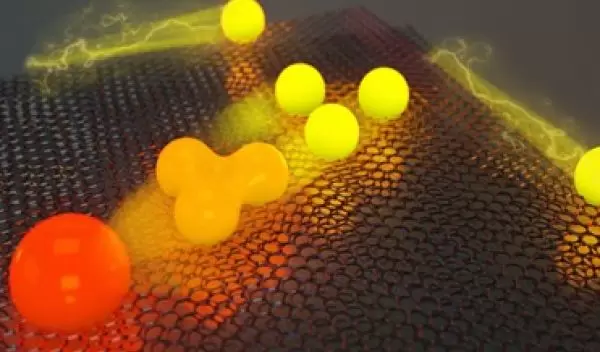
Researchers observe rare fractional state in bilayer graphene for the first time
Rare quantum particles and phenomena are difficult to study. For probing complex phenomena like superconductivity or particles that carry a fraction of the charge of an electron, extremely low temperatures or extremely high magnetic fields are required.
The ability to produce complex behavior in moderate conditions could be key to realizing the potential of room temperature superconductivity or generating fractionally charged particles with a low magnetic field. Both phenomena are steps to advances in new types of quantum computing, quantum materials and applications.
A team of researchers at Harvard University observed rare fractional states at a low magnetic field in twisted bilayer graphene for the first time. The U.S. National Science Foundation grantee researchers published their findings in the journal Nature.
"One of the holy grails in the field of condensed matter physics is getting exotic particles with low to zero magnetic fields," said Amir Yacoby, senior author of the study. "There have been theoretical predictions that we should be able to see these bizarre particles with low to zero magnetic fields, but no one has been able to observe them until now."
The researchers were interested in a specific quantum state found in materials known as fractional Chern insulators. Chern insulators conduct electricity on the surface or edge, but not in the center. In a Chern insulator, interactions between electrons produce quasiparticles.
The team built a fractional Chern insulator to create the conditions that generate the elusive quantum state. To build the fractional Chern insulator, the researchers used two sheets of graphene twisted at a specific angle to produce superconductivity and Chern bands with the potential to generate fractional quantum states.
For the device to work, all the electrons need almost identical properties. The material used, bilayer graphene, doesn't meet that requirement but the electrons in twisted bilayer graphene have variable levels of curvature that create a momentum-specific magnetic field for each electron.
"We showed that we can observe a fractional Chern insulator in the twisted bilayer graphene," said Yonglong Xie, co-author of the paper.
"Twisted bilayer graphene is the gift that keeps on giving and this discovery of fractional Chern insulators is arguably one of the most significant advances in the field," said Ashvin Vishwanath, senior author of the study. "It is astonishing to think that this wonder material is ultimately made of the same stuff as your pencil tip."
